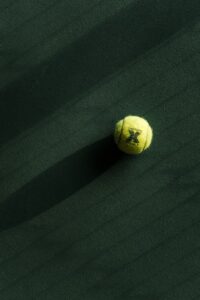The Art of Padel Ball Selection: An In-Depth Review of the Types of Balls Available
3 min read
The Art of Padel Ball Selection: An In-Depth Review of the Types of Balls Available
As a padel player, selecting the right ball type can make a significant impact on your game. The padel ball is an essential part of the game that often goes overlooked. A padel ball can influence the game’s speed, bounce, and overall feel, ultimately affecting your performance. In this padel ball review, we will guide you through the types of balls available on the market, their characteristics, and which one suits your playing style.
The Types of Padel Balls
1. Pressurized Balls:
Pressurized padel balls are the standard ones used in most competitions, including the World Padel Tour. They feature a pressurized core that gives them a high bounce and more extended life span. These padel balls are heavier and travel faster through the air, making control a bit more challenging.
2. Non-Pressurized Balls:
Non-pressurized padel balls are softer and lighter than pressurized ones. They have a lower bounce and tend to lose their bounce quicker but are perfect for training sessions. Since they are softer and less bouncy, they allow beginners and intermediates to develop better ball control and adjust to the game’s speed.
3. Stage 2 Balls:
Stage 2 padel balls are mini padel balls that are ideal for kids and beginners. They come in various colors, such as orange and green, and are softer and lighter than standard padel balls. These balls have a lower bounce, which makes them more manageable to hit and control.
Choosing the Right Padel Ball
Choosing the best padel ball depends on your skill level, playing conditions, and preferred playing style. Here are some factors to consider when selecting a padel ball.
1. Skill Level:
For beginners and intermediate players, a softer, non-pressurized padel ball is perfect. It offers less bounce and is easier to control, helping you to develop better technique and accuracy. Advanced players, on the other hand, prefer pressurized padel balls since they provide a faster pace and greater distance.
2. Playing Conditions:
Playing conditions such as temperature and altitude can impact the ball’s performance. A pressurized padel ball is more susceptible to extreme temperatures and altitude. If you are playing outdoors in hot weather, a non-pressurized or a stage 2 ball may be your best bet.
3. Playing Style:
The ball you choose can also affect your playing style. If you are an aggressive player and like to take big swings, a pressurized padel ball may be best. If you prefer to play a defensive game and work on your technique, a non-pressurized padel ball may be better.
Conclusion
Choosing the right padel ball can make a significant difference in your game. Consider your skill level, playing conditions, and playing style when selecting the best padel ball for you. Remember, whether it’s a pressurized, non-pressurized, or stage 2 ball, a padel ball should always meet the regulations set by the International Padel Federation. Take your time and experiment with different ball types to see what works best for you. With the correct choice of padel balls, you’ll be able to enjoy a more exciting and comfortable game.






